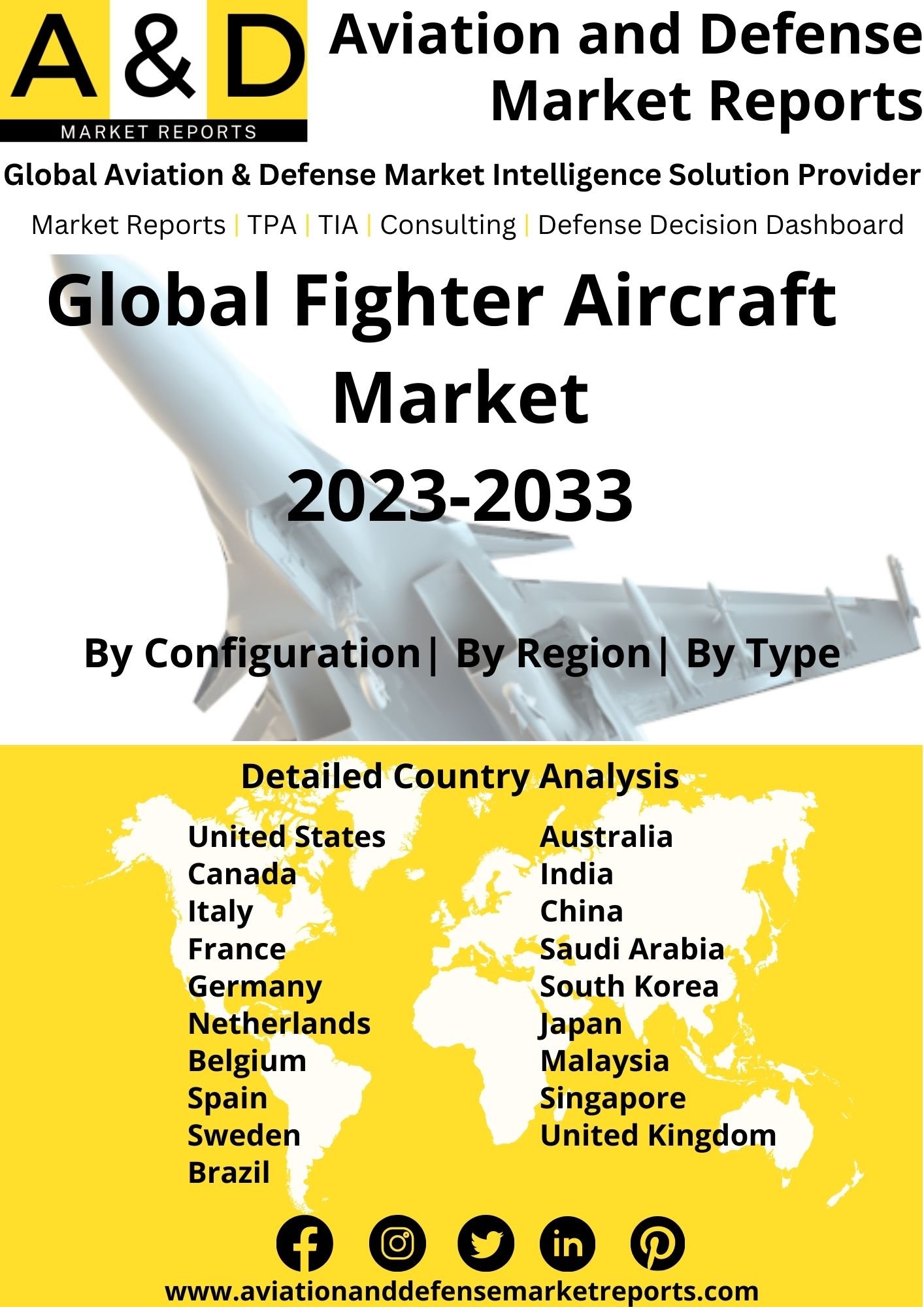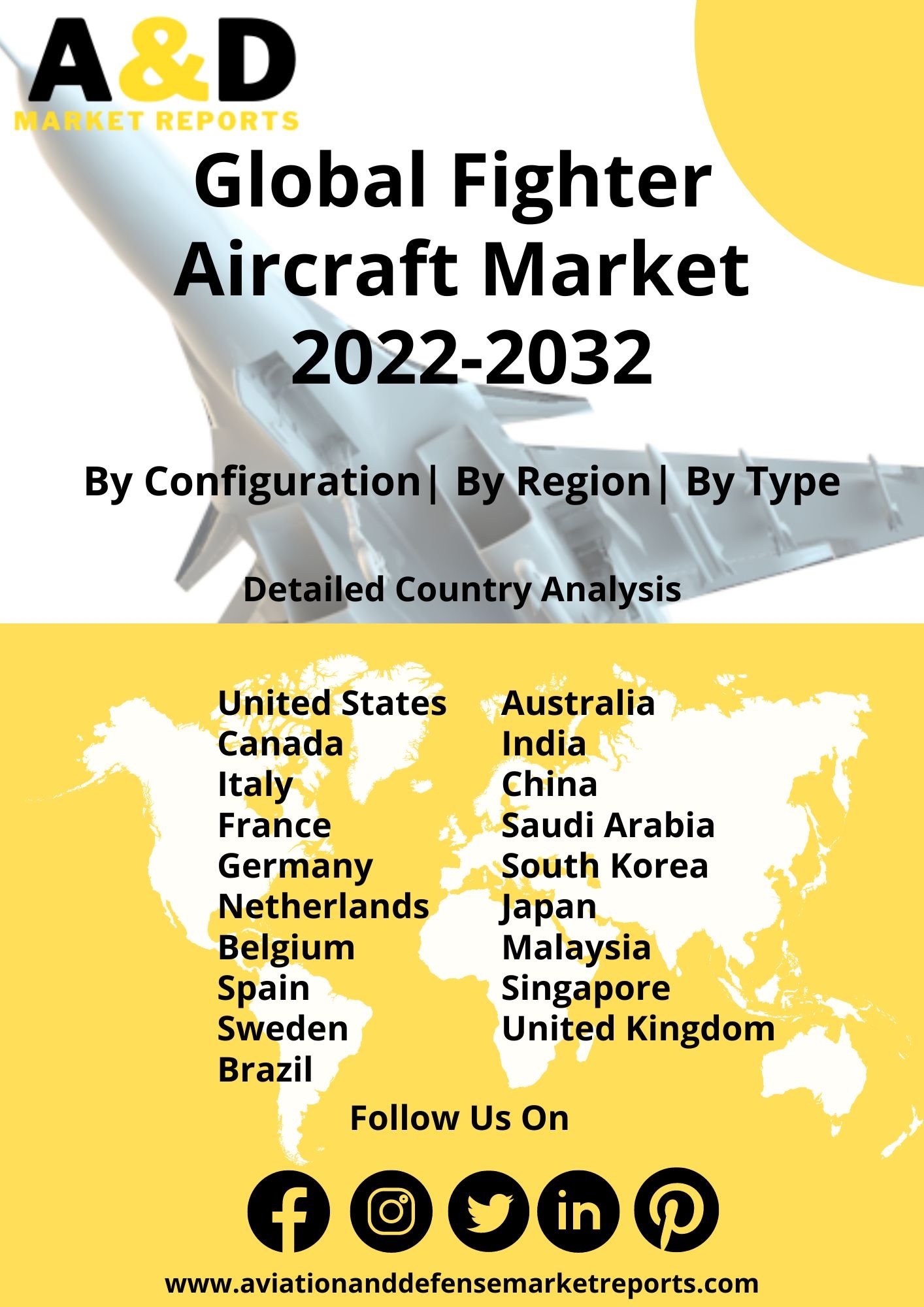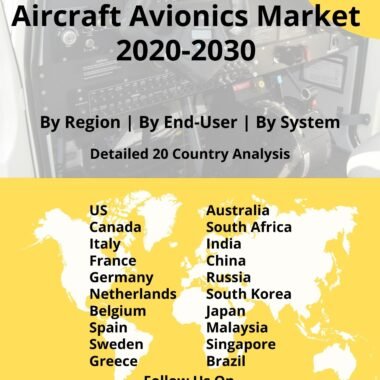Description
Global Fighter Aircraft Market
Frequently Asked Questions of Fighter Aircraft Market
Fixed-wing military aircraft known as fighters are created primarily for air-to-air combat, the use of this technology across air platforms offers military forces added strategic and tactical advantage from an alleviated surface. The purpose of fighter aircraft in armed conflict is to establish air superiority over the battlefield. Fighter aircraft as the name suggests are integrated with weapons systems that allow accurate locating and targeting of adversaries. In addition to its enhanced weaponry, a fighter’s important performance characteristics include its high speed and mobility in relation to the target aircraft.
Many contemporary fighter aircraft possess auxiliary capabilities, such as those for ground attack. While fighter-bombers are designed in accordance with the outset to perform multiple roles. Fighters including the interceptor, heavy fighter, and night fighter are highly specialized models with the ability to carry out primary functions in addition to auxiliary roles.
Major Factors Driving Fighter Aircraft Market Growth
One of the key factors that are anticipated to fuel the expansion of the fighter aircraft market size is the rising defense spending in different countries. Fighter aircraft market trends state that the growth in the purchase of air platforms as a result of the increasing defense budget is anticipated to support the fighter aircraft market’s overall growth. Growth in activities like terrorism and brewing border tensions between nations is noted to be one of the key factors that are expected to drive the growth associated with the tactical missiles fighter aircraft market. The Russia-Ukraine war is noted to be another key driver that is poised to shift the purchasing trends within the defense sector. Other factors like growing border conflicts are expected to boost the procurement of fighter aircraft.
Trends Influencing the Fighter Aircraft Market Size
Due to rising defense budgets and escalating geopolitical tensions, these weapons are increasingly being purchased, which is largely responsible for the increase in fighter aircraft market size. For instance, the border conflicts between India and China have led to an ultimate surge in procurements based on the two nations. Both India and China have been competing in terms of military inventory acquisition, design as well as integration. Fighter aircraft market analysis states that a rise in indigenous programs is another factor that is poised to propel the growth associated with the domestic acquisition of components and integrated models for fighter aircraft. As of June 2022, the IAF was willing to acquire 114 fighter aircraft, 96 of which were to be built in India. The increase in the domestic production of aircraft would ultimately result in an increase in direct, indirect, as well as induced employment opportunities. The rise in employment avenues would potentially result in an increased purchasing power which is anticipated to account increase the defense spending for the said nation.
However, as per the fighter aircraft market analysis, one factor that needs to be taken into account and is likely to have an impact on how much each country spends on the military is inflation in the global fighter aircraft markets. The inflation is anticipated to lead to an increase in wages amongst employees within the aerospace and defense segment. This is mainly because inflation could potentially lead to a cut in terms of consumer spending, thus in order to boost employee retention, companies would implement strategies like raising the wages of employees, particularly in segments like the defense that require a niche set of skills.
As per secondary sources, increased military and personnel costs could strain the defense-based investments made by prominent economies. This in turn could potentially limit the procurement of military equipment across the global fighter aircraft markets.
Fighter Aircraft Market Forecast & Dynamics
As tensions between major world powers increase, nations are making efforts to enhance their capacity for aerial combat. Many nations have been upgrading or replacing their old fighter jets with more advanced, contemporary aircraft. Since various countries have increased their worldwide defense budget, there has been a lot of procurement and development activity for fighter jets. The rising defense budget, increased emphasis on fleet modernization and expansion, and increased focus on creating indigenous, modern-generation fighter aircraft are the primary factors projected to drive the fighter aircraft fighter aircraft market growth.
Fighter Aircraft Market Analysis for Recent Developments
The Indian Air Force (IAF) is halving the size of its largest fighter aircraft purchase program, and in light of the lower numbers, has hinted that it is likely to shift the procurement model to one that is more acceptable to international suppliers for compliance with Make in India standards. The anticipated USD 20 billion Multi-Role Fighter Aircraft (MRFA) purchase program for 114 foreign aircraft is being reduced to the acquisition of 57 jets through global competition, according to highly placed sources.
Ten Su-57 fighters were added to the Russian Aerospace Forces’ (RuAF; also known as VKS or RuAF) fleet. Stage One engines power these aircraft. Every Su-57 that leaves the factory will have stage two engines, also known as “”Izdelie 30″” code names. The last three years have been spent developing and testing this engine thoroughly. The engine was first known as AL-51, and it later had an upgraded version known as AL-51-F1. The Air Force will not be upgrading the engines of the Su-57 fighter jets that are currently in service. Rather, they will keep using the engine version that is currently in use. As the year drew to an end, the state corporation Rostec formally declared that testing of the second stage engine was finished. The AL-51-F1 engine is a complex device that consists of a low-bypass afterburning turbofan with two shafts. This engine’s intricate design incorporates a single-stage low-pressure turbine driving a three-stage fan. Furthermore, a key component of its design is a five-stage high-pressure compressor powered by a single high-pressure turbine. Comparing the AL-51-F1 to its predecessor, the AL-41F1, reveals some striking improvements. This engine is very innovative because it has nozzles and IGVs made of glass-fiber plastic that converge and diverge smoothly. These nozzles have serrated flaps, which reduce their radar signature significantly.
Key Companies
General Atomics Aeronautical Systems, Inc.







